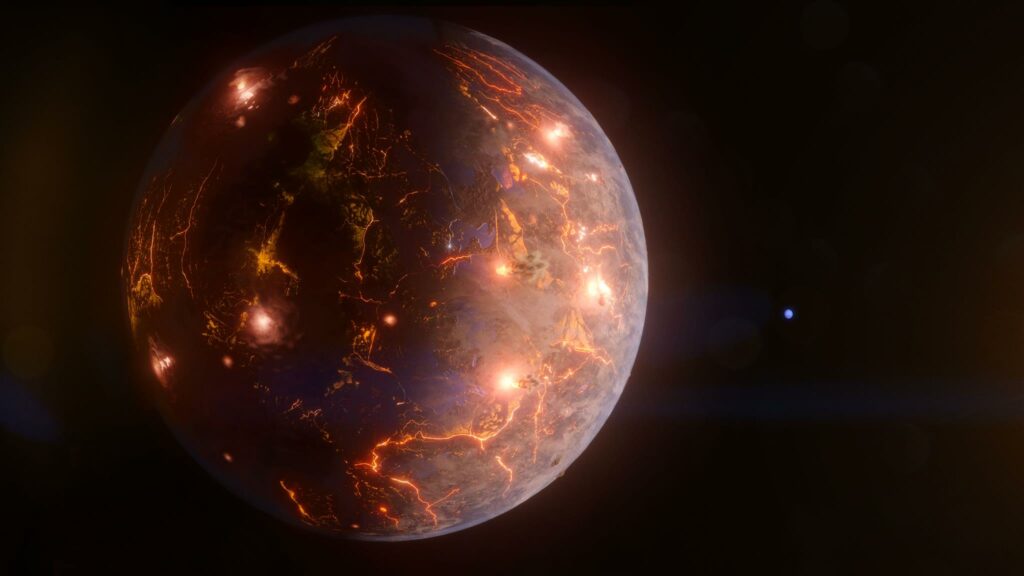Astronomers have stumbled upon a groundbreaking discovery, unveiling an Earth-size exoplanet that may be filled with volcanoes and could even support life. This incredible find of a new world, named LP 791-18 d, is raising hopes and curiosity among scientists.
LP 791-18 d is a planet located about 90 light-years away, orbiting a small red dwarf star in the constellation called Crater. It’s slightly bigger than Earth and is suspected to have frequent volcanic outbursts similar to Jupiter’s moon Io, known as the most volcanically active body in the solar system.
“Only a small proportion of the exoplanets discovered so far are thought to be able to support life. Our discovery of LP 791-18 d gives us more hope that we might one day find signs of life on another planet,” says Karen Collins, an astronomer at the Center for Astrophysics | Harvard & Smithsonian, in a statement.
The unique thing about LP 791-18 d is that it’s tidally locked, meaning the same side of the planet always faces its star. The side facing the star is believed to be too hot for liquid water. However, scientists speculate that volcanic activity could maintain an atmosphere, and on the cooler, dark side of the planet, water might be able to condense.
The discovery of LP 791-18 d was made possible through both space-based and ground-based observations, including data from NASA’s Transiting Exoplanet Survey Satellite (TESS) and the retired Spitzer Space Telescope. Ground-based observatories organized by Collins also contributed to the study.
Volcanic Activity: A Key to Understanding
The volcanic activity on LP 791-18 d is believed to be caused by the gravitational pull of other planets in its system. An outer planet in the system, LP 791-18 c, passes close to planet d, creating a gravitational tug. This tug makes the planet’s orbit slightly elliptical, leading to deformations that generate internal friction, heating the planet’s interior, and triggering volcanic activity.
“A big question in astrobiology is if tectonic or volcanic activity is necessary for life. In addition to potentially providing an atmosphere, these processes could churn up materials that would otherwise sink down and get trapped in the crust, including those we think are important for life, like carbon,” explains Jessie Christiansen, a research scientist at NASA’s Exoplanet Science Institute at Caltech.
The Future of Exploration
The finding has opened up exciting new avenues for exploration. Researchers have already received approval to study the nearby planet c using the James Webb Space Telescope, and planet d is considered an exceptional candidate for atmospheric studies as well.
“This discovery is just a first step,” Collins added. “With the potential to continue studying this planet with the James Webb Space Telescope, we will be able to fine-tune our observations and learn more about the planet’s likely volcanically fueled atmosphere. Future discoveries will help us understand how the ingredients of life might have come to be on worlds other than our own.”
The discovery of LP 791-18 d represents an exciting step forward in the quest to understand the universe and the possibility of life beyond Earth. Its unique characteristics, including its volcanic activity and potential to host liquid water, offer a tantalizing glimpse into worlds that are strikingly different from our own yet hold the promise of unlocking profound mysteries.
The research paper is published in the journal Nature.












